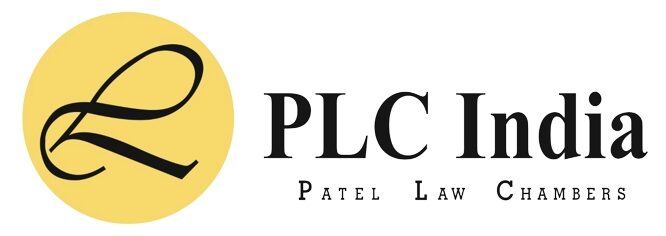Any name, symbol, word, device, or combination of the aforementioned elements constitutes a trademark, a type of intellectual property right. To identify and set one manufacturer’s products apart from those of other manufacturers, it is used in commerce. Also, it identifies the authenticity and origin of the products. Brand names are represented through trademarks.
The action for passing off is a common law remedy, whereas the action for infringement is a statutory remedy. Common-law tort known as passing off is used to enforce unregistered trademark rights. It prohibits someone from falsely advertising their products and services as those of another. It is essential to demonstrate that the infringing mark is confusingly close to or identical to the registered trademark in order to establish trademark infringement, and no more evidence is necessary. However, merely demonstrating that the mark is confusingly close to or identical to the registered trademark is insufficient in a passing off case. The mark’s usage must be leading to or likely to lead to misinformation and misunderstanding about the products and services.
Even if the following user possesses a registered trademark, it is a well-established legal principle under Indian trademark law that the earlier use of the products will prevail. As a result, the rights of the preceding owner of a registered trademark may affect the rights the mark confers.
A legal foundation for the aforementioned principle is provided by Section 34 of the Trademark Act, 1999. It specifies that a registered trademark owner is not allowed to interfere with the use of any similar or identical marks that have been used by someone else earlier than the registered owner.

The case of Neon Laboratories v. Medical Technologies
The issue involved the drugs “Profol” from Medical Technologies ltd. and “Rofol” from Neon Laboratories ltd., which had the same chemical in both and was introduced and sold there. It is significant to note that whereas Medical Technologies ltd began using the term “Profol” in 1998 and never registered it, Neon Laboratories registered the trademark “Rofol” in 1992 but didn’t start using it until 2004. Hence, the situation was made more difficult by the fact that Medical technologies had a prior user date while NL had a prior registration date. The Plaintiff-Respondents had allegedly developed a sizable goodwill in the market for PROFOL during this interim period, the Court found, in addition to filing for registration and starting to produce and market the comparable medicine.
Determining whether Neon laboratorie’s prior registration would have the effect of “obliterating the significance of the goodwill” that had been built up during this interregnum by Medical Technologies ltd and its medicine becomes the question at hand. The Court only considers the issue from the standpoint of a prima facie case in order to determine the issue of the injunction, deferring to the subsequent stages of the lawsuit to address it. The Court did so while examining Section 34 of the Trademark Act. It interprets Section 34 in accordance with the “first user” theory, which states that a trade mark owner has no authority to forbid another party from using an identical or similar mark in circumstances where the mark was first used.
Since Neon laboratories ltd had already registered their trademark before Medical Technologies began selling Profol, this was obviously to NL’s advantage. But, the Court adopted a purposeful reading of this clause, concluding that it was meant to defend the “previous user,” in this case MT, from a mark owner who isn’t using their trademark. In support of this interpretation, the Court further noted that Section 47 of the Act, which permits the removal of a registered trademark from the register due to nonuse, clearly conveys a similar aim. Because of this, the Court stated, “the hoarding of or appropriation without utilisation of a trademark” is prohibited by the Act.
The Supreme Court ruled that the respondent, Medical Technologies, was the beneficiary of all three factors. By producing sufficient evidence showing they had been using their trademark long before the Appellant, Neon Labs, began using a mark that was almost identical to or identical in all material respects, the Respondent effectively established a prima facie case. The respondent was therefore qualified for an ad interim injunction based on the “first in the market” standard. The Supreme Court also decided in favour of the respondent on the grounds of convenience and irreparable harm after taking into account the potential loss of revenue and goodwill. The trial court had issued the injunction just one year after defendant-appellant released its product, according to the Supreme Court; therefore the weight of the evidence was against the defendant-appellant.
The Supreme Court ruled that if the appellant had begun using its trademark “ROFOL” before, concurrently with, or immediately following the respondent’s start of marketing its products under the trademark “PROFOL,” the registration of trademark “ROFOL” having retrospective effect from the date of its application would help the case to be decided in the defendant-favor. However, the appellant-defendant did not take any steps to advertise its goods under the trademark “ROFOL.” The appellant was also “legally lazy” to take any action that would prevent the respondents from using the trademark “PROFOL” while the application for registration was still ongoing. The Supreme Court further noted that the appellants, who may have raised objections, were not the ones who brought the lawsuit; rather, it was the respondents.
The Trial Court’s and Gujarat’s High Court’s decision to allow the respondent’s request for an injunction was upheld by the Supreme Court.
It has been established through the case of Neon Labs Ltd. v. Medical Technologies Ltd. and Ors. That merely registering a trademark does not prevent prior users from using a mark that is close to or identical to the registered trademark. Hence, careful study must be done before registering a trademark in order to prevent employing a mark that is similar to one already in use, even if it is not.

Recent Comments